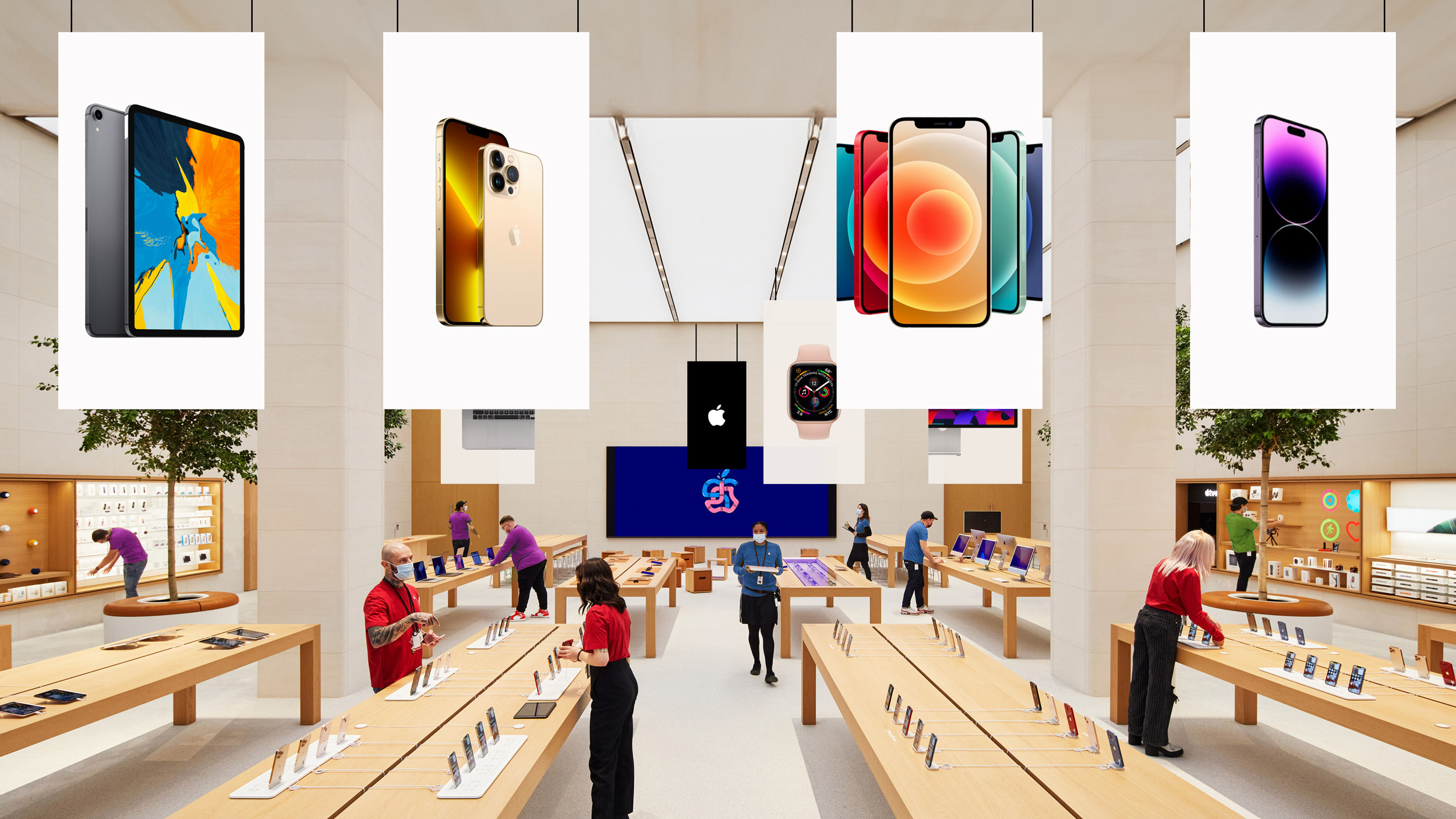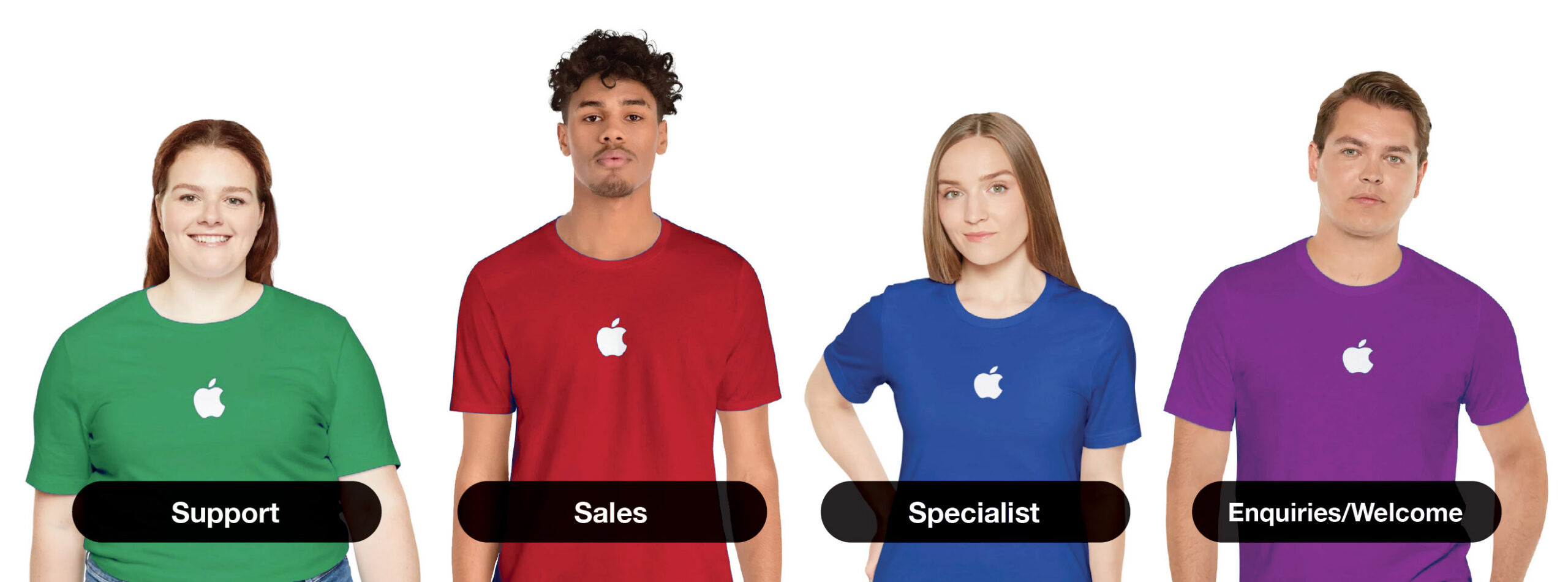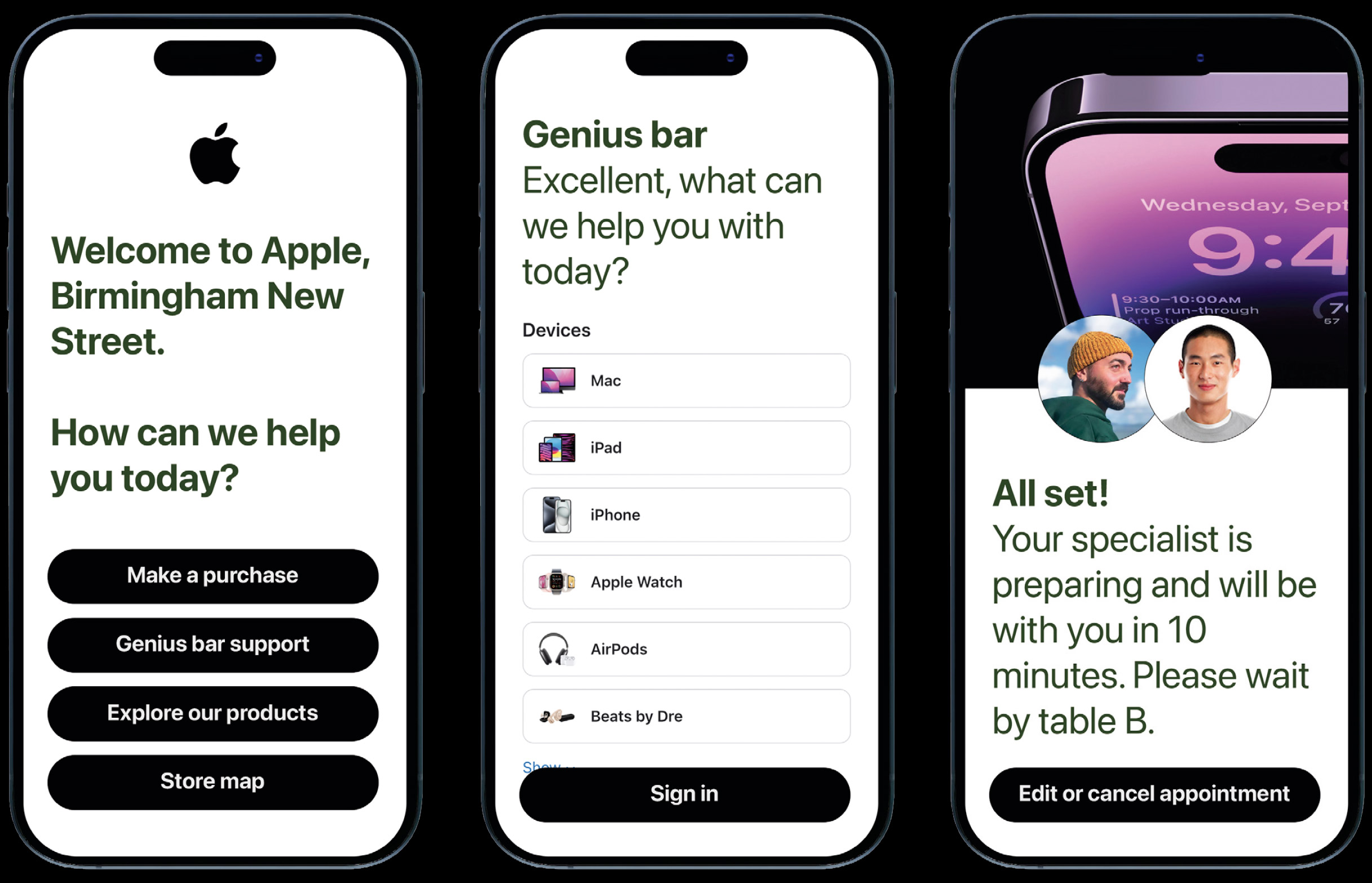#RESEARCH
Brand value proposition: Apple Inc.
Aim
This proposal focuses on enhancing Apple’s in-store experience by improving wayfinding and customer-specialist interactions. Aligned with Apple’s values of simplicity and innovation, it aims to boost customer satisfaction, highlight product identity, and promote environmental responsibility, reinforcing Apple’s position as a premium, community-driven brand.
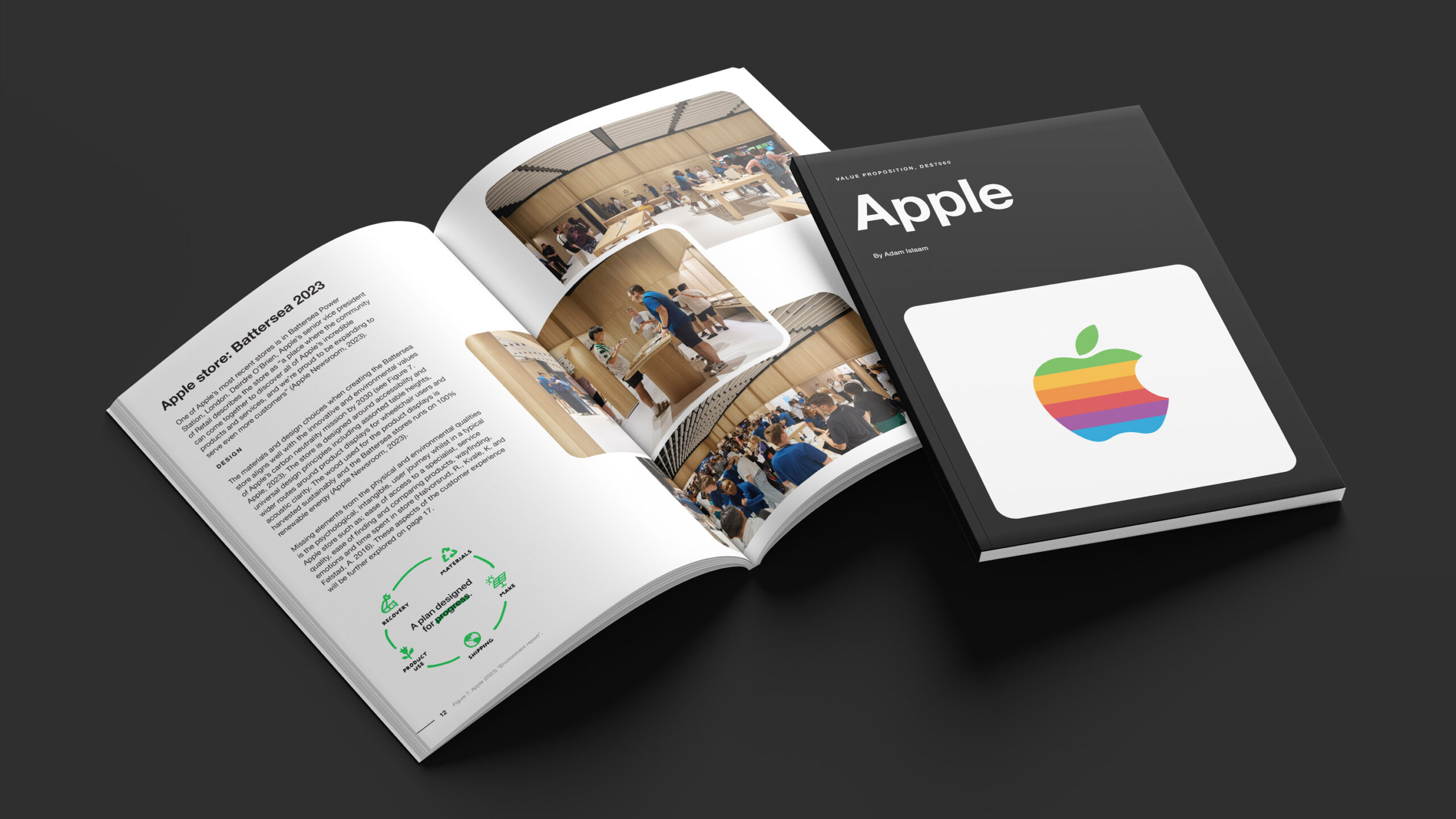
"Get closer than ever to your customers. So close that you tell them what they need well before they realise it themselves.”
– Steve Jobs, 2008
(01)
ABOUT THE PROJECT
Enhancing Apple's in-store experience through design thinking
Apple's identity is defined by simplicity, innovation, and user-focused design, creating an ecosystem that seamlessly integrates its products and fosters strong customer loyalty. Known for intuitive and visually striking products, Apple has established itself as a premium, aspirational brand in the consumer electronics industry.
However, its physical retail spaces face challenges, particularly in navigation and accessing in-store specialists. This proposal explores how design thinking can enhance Apple's in-store experience, addressing these issues to strengthen its brand presence. In an increasingly competitive market, improving customer satisfaction is key to maintaining loyalty and staying ahead.
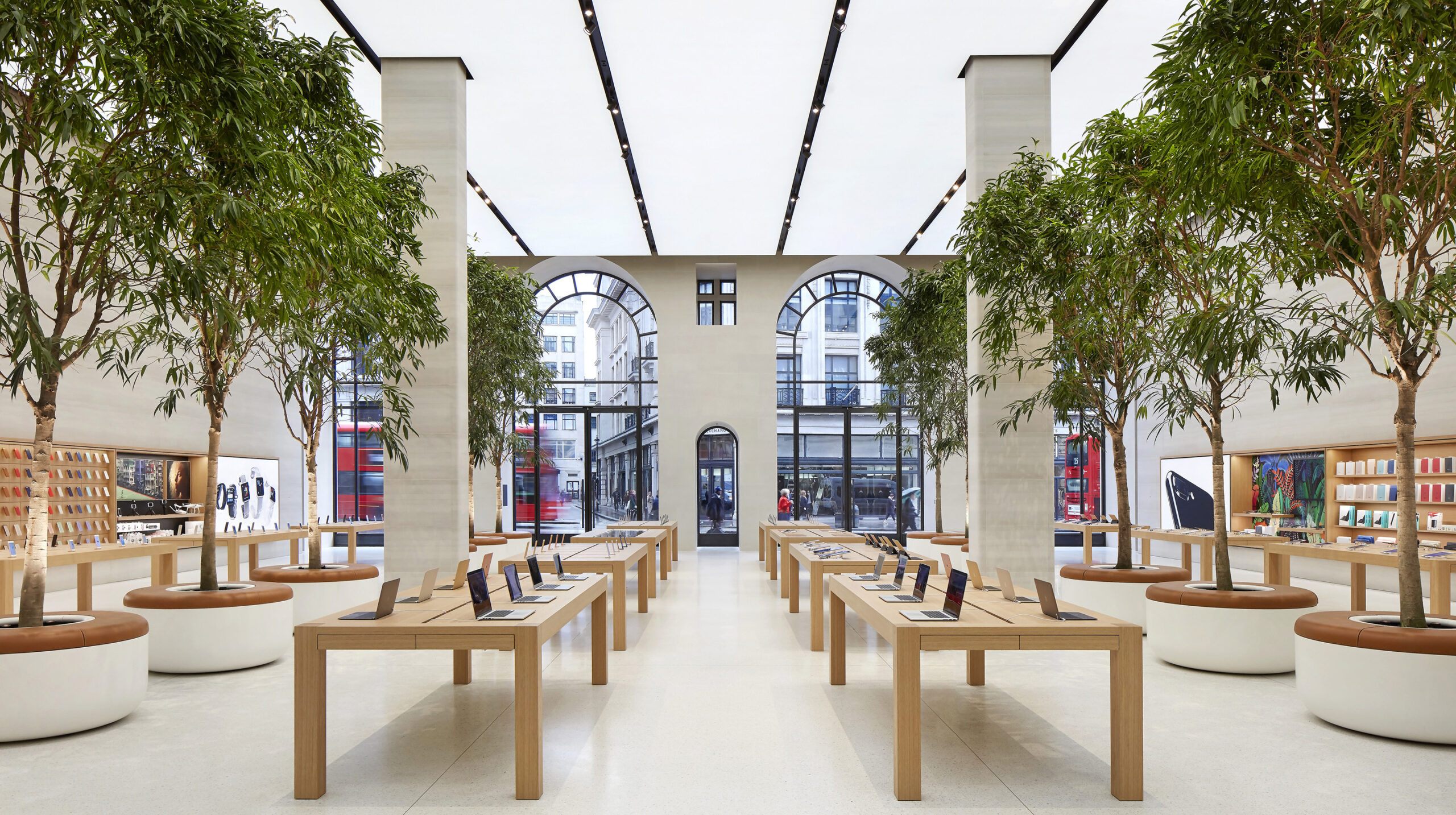

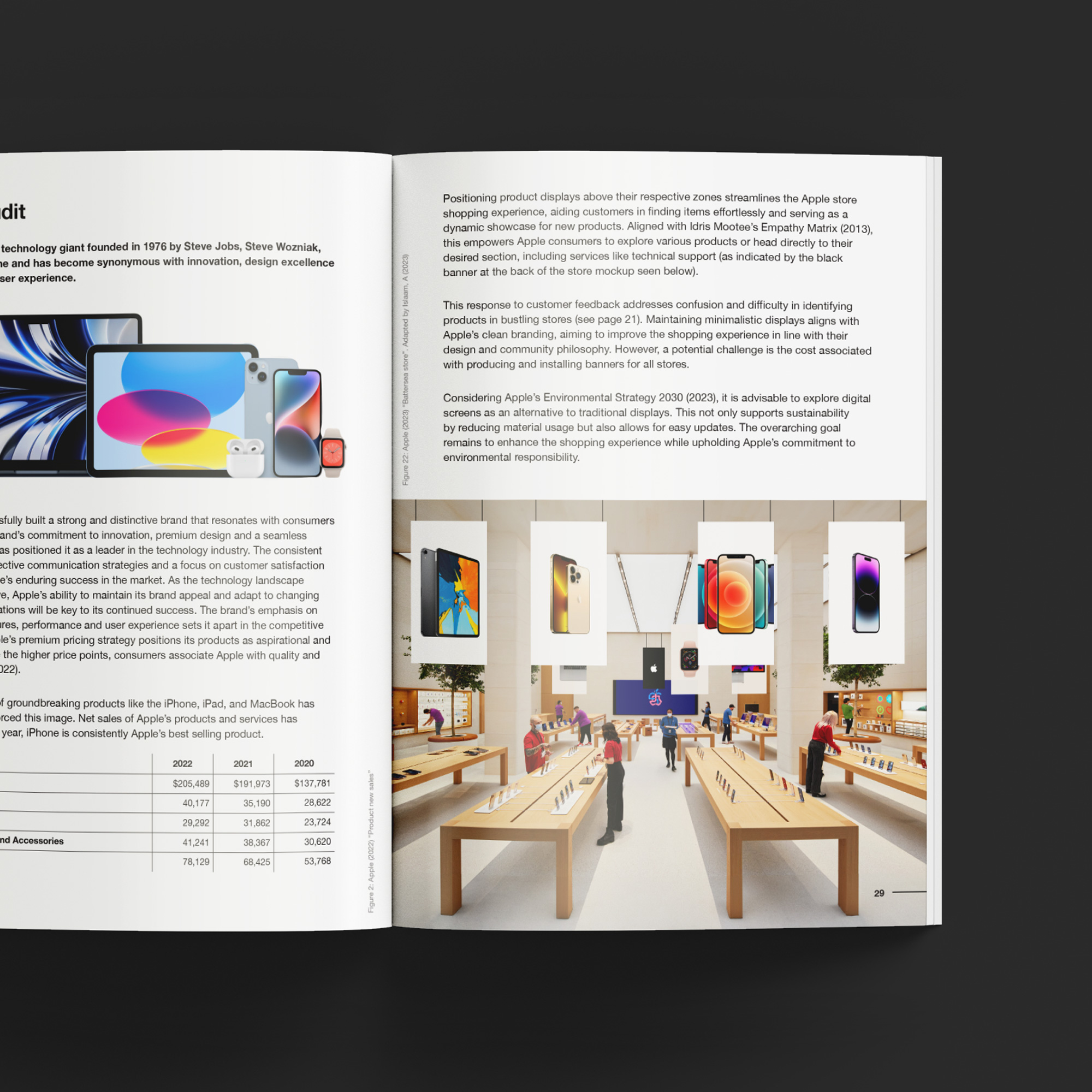
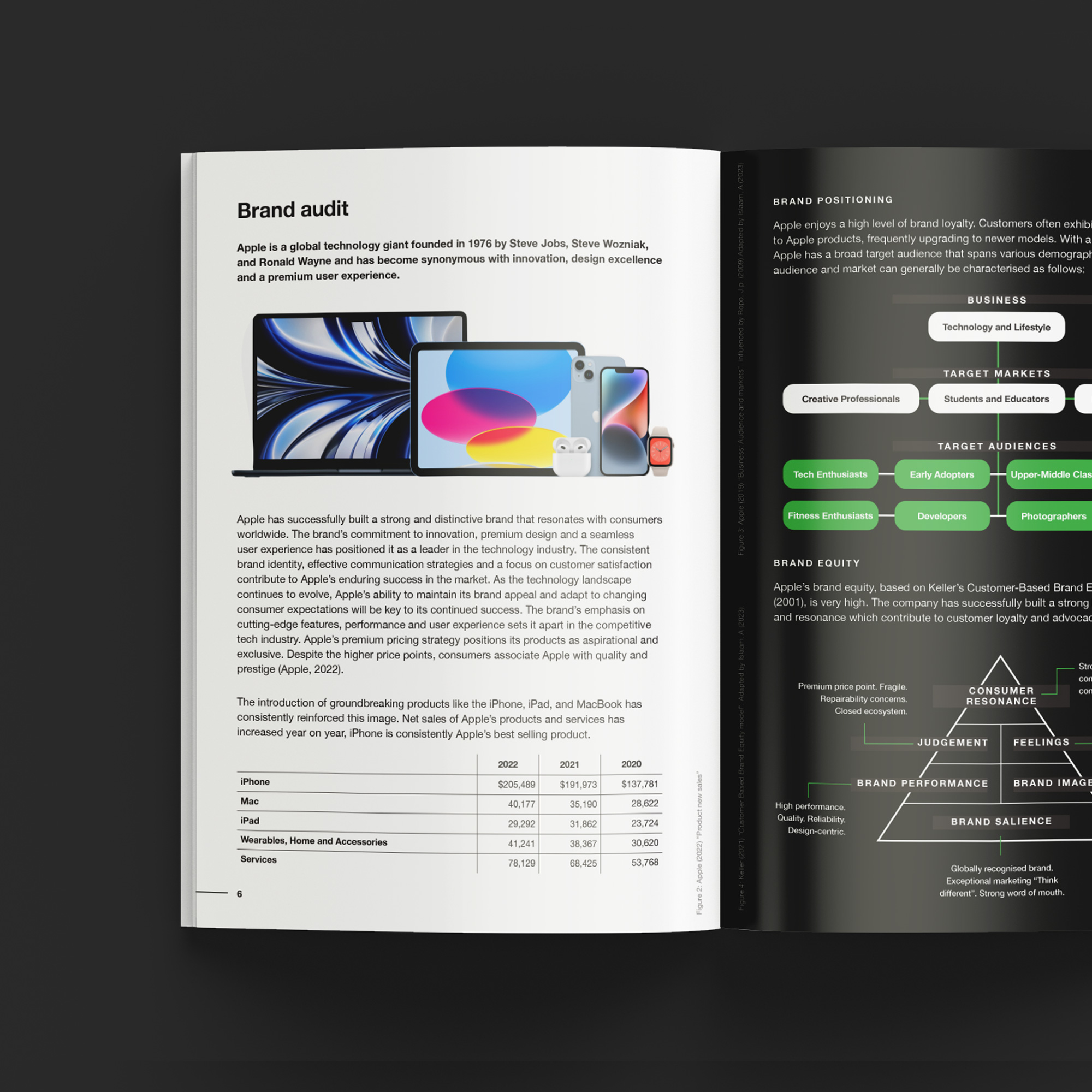
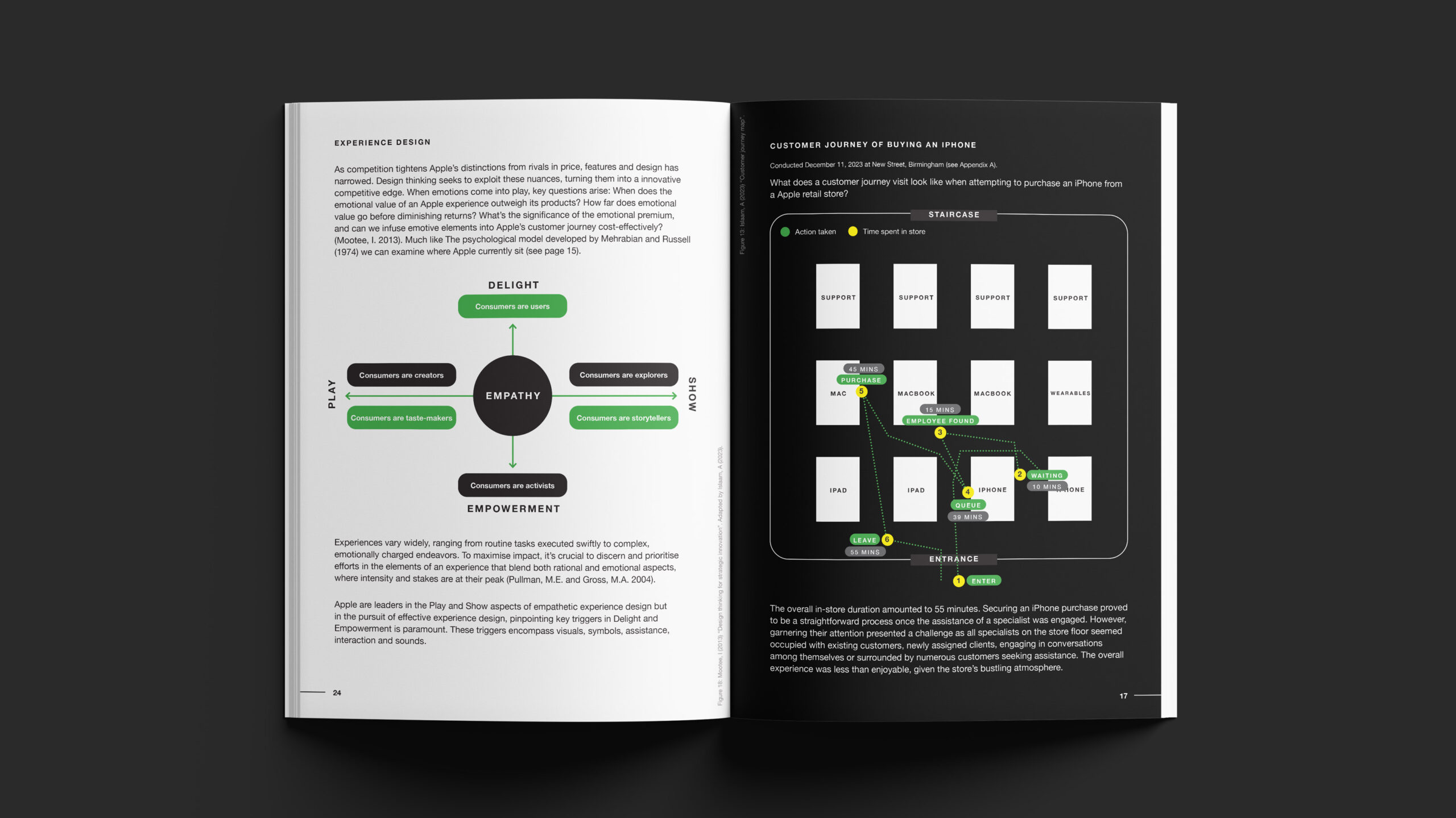
(02)
INITIAL RESULTS
Analysing the Apple store experience
This research examines the Apple store customer journey to identify areas for improvement. Customer journey mapping highlights the challenges and time spent purchasing an iPhone. Surveys and questionnaires gather insights on navigation, staff interactions, and satisfaction, while empathy mapping explores customers' thoughts, feelings, and behaviours.
A SWOT analysis evaluates Apple’s retail strengths and weaknesses, and thematic analysis of interviews identifies recurring patterns. Together, these methods provide a detailed understanding of the in-store experience and inform strategies for enhancement.
The following results were observed:
50% of purchases were iPhone. 21% Mac. 21% Wearables. 7% iPad.
36% who purchased online to collect in-store had an easier and quicker time purchasing than those who did not.
The ease of finding the desired product was high (4/5).
The overall usefulness of the store layout and signage was low (2/5).
91% responded they did interact with a specialist during their visit.
The ease of finding a specialist was low (2/5).
The overall mood was low (2/5).
Factors that influence a return visit include clearer signage, easier access to specialists, and a central system.
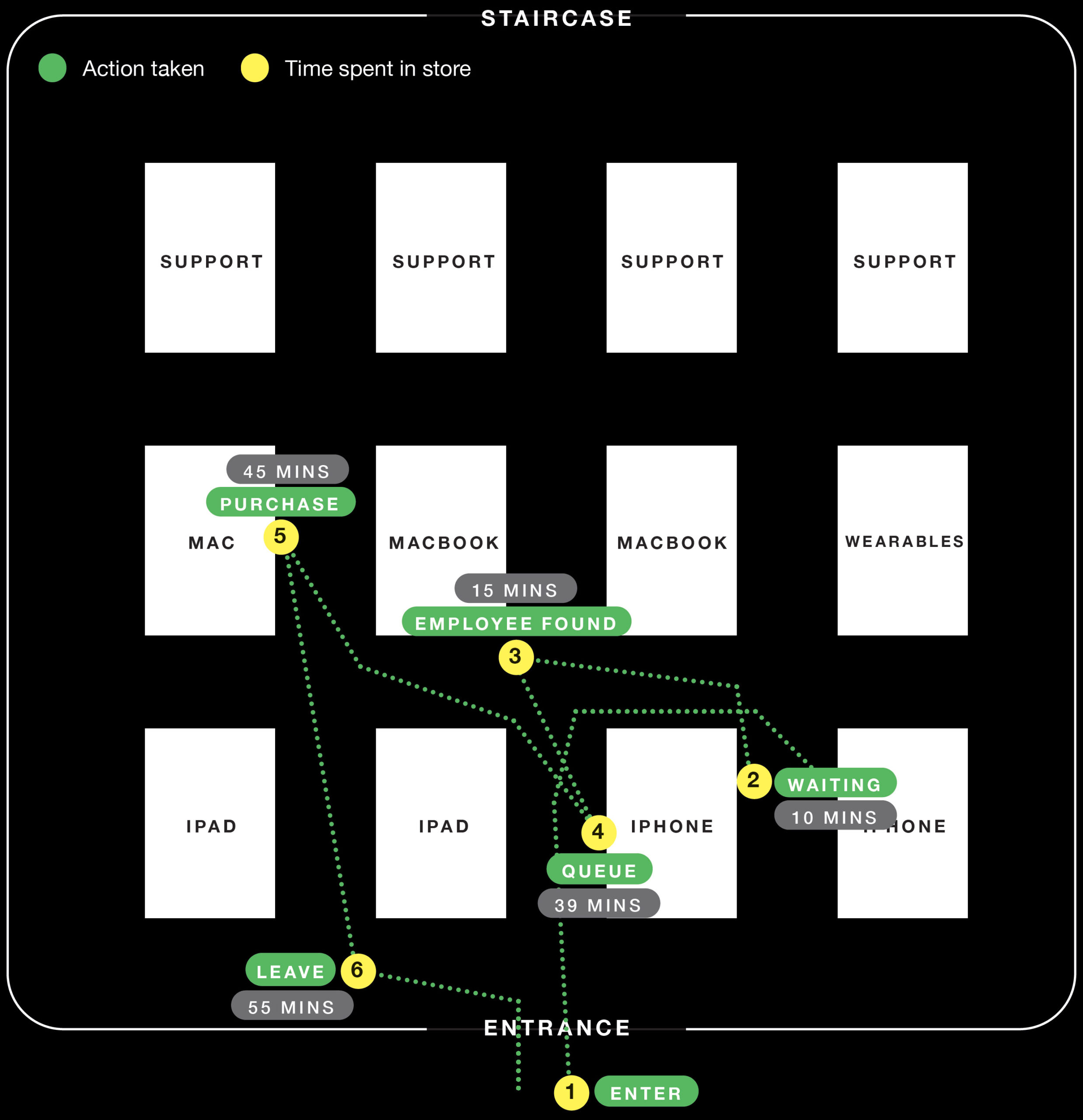
The application of design principles to value proposition and strategy significantly enhances the success of innovative initiatives. According to the Design Value Index by the Design Management Institute and Motiv Strategies, companies with design-led approaches have outperformed the S&P 500 by an impressive 211% over a 10-year period.
(03)
RECOMMENDATIONS
Customer-centric enhancements for Apple stores
While Apple customers generally appreciate the sleek design and layout of its stores, some find the bustling environment overwhelming. High foot traffic often creates challenges in navigation, with product zones blending together and lacking clear visual markers. Additionally, customers frequently struggle to identify and locate staff for assistance, with support, specialist, and sales roles indistinguishable in the busy atmosphere.
To address these challenges, implementing clearer markers for product zones and distinct identifiers for staff roles is crucial. For example, staff could wear uniforms in different colours based on their roles, helping customers quickly identify whom to approach. Categorised zones enhanced with coloured visual cues and digital screens could simplify navigation, making it easier for customers to locate products or services like technical support.
Positioning products above their respective zones would streamline the shopping process, serving as both a practical aid and a dynamic showcase for new offerings. Incorporating digital screens instead of static displays aligns with Apple’s environmental goals, offering flexibility for updates and reducing material waste. These enhancements maintain Apple’s minimalistic aesthetic while improving navigation and customer satisfaction.
Enhancing customer-specialist interaction
Customer feedback highlights challenges in accessing specialists at Apple stores, with staff often stretched thin and unable to provide the one-on-one experience Apple values. A virtual ticketing system could address this by allowing specialists to organise inquiries in advance while giving customers clear information on their designated specialist, wait times, and options to explore or leave the store.
This system streamlines interactions, enhances efficiency, and reinforces Apple’s commitment to personalised, attentive service, creating a more satisfying experience for both customers and staff.
(04)
POTENTIAL BARRIERS
Employee Training and Change Management:
Introducing new knowledge or technologies necessitates comprehensive training for store employees, who must adapt to workflow changes. This could incur further costs for new training schemes or increased specialists. Apple should invest in thorough training programs to ensure employees are proficient in using and supporting the new systems. Clear communication and change management strategies will be crucial to overcoming resistance or confusion among staff.
Integration with Existing Systems:
Integrating new digital systems with Apple’s existing backend infrastructure and databases may pose compatibility challenges. Apple should work closely with its IT department and technology partners to ensure a seamless integration process. Regular updates and maintenance will be crucial to address any compatibility issues arising over time.
User Adoption and Accessibility:
Ensuring that a diverse user base, including those less familiar with technology, can easily adopt and navigate these digital solutions may be challenging. Apple must design interfaces that are intuitive and user-friendly, considering various demographics. Additionally, providing assistance and tutorials within the store can help users become familiar with the new systems.
Privacy and Data Security Concerns:
Collecting and processing customer data for digital ticketing and personalised recommendations raises privacy and security concerns. Apple must prioritise and communicate a strong commitment to customer privacy. Implementing robust encryption measures and transparent data policies will be essential to address these concerns
(05).
CONCLUSION
Elevating the Apple store experience
This proposal advocates strategic enhancements to Apple’s in-store experience, focusing on customer satisfaction, product identity, and sustainability. Key solutions include improving wayfinding, refining customer-specialist interactions with a virtual ticketing system, and adopting eco-friendly digital displays aligned with Apple’s Environmental Strategy 2030.
These measures aim to boost customer loyalty, streamline operations, and reinforce Apple’s premium brand identity. Success will be tracked through satisfaction surveys, reduced wait times, and feedback on wayfinding. A phased implementation ensures minimal disruption while addressing competitive pressures and sustaining Apple’s reputation for innovation and design excellence.
